Abstract 8/2015
Table of content
Angelika Łastowska, Bryniarska Zofia – Assessment of self – service urban bike rental system in Cracow
Malwina Spławińska – Characteristics of traffic flow variability on the provincial roads
Irena Fryc – Analysis of the impact of bicycle lighting on road safety
Jędrzej Gadziński – BRT systems – a chance to solve transport problems of Polish cities?
Michał Tuszyński – Development of pro-ecological public transport in Gdynia
Abstracts
Angelika Łastowska, Bryniarska Zofia
Assessment of self – service urban bike rental system in Cracow
Abstract: The idea of urban bike was arisen in Amsterdam in the 60s and its precursor was Luud Schimmelpennink. Nowadays, there are more than 140 self-service urban bike rentals in the world, located in 165 countries. The considerable development of those rentals results with the use of bicycle as a mean of transport in urban travels, which turns out to be more ecologic, economical and healthy way of travelling. First of all, speed of bicycle travel in peak hours appears to be very competitive in comparison to other means of transport, especially in cities, where bike infrastructure is being constantly developed and authorities implement new measures to rise comfort of bike travels. The main goal of this article is to analyze of self-service urban bike rental system in Cracow, on the basis of surveys among users conducted in the end of the cycling season 2014.In the first part of the article the advantages of public self-service urban bike rentals have been pointed out and the predominance of bike travels in urban space has been defined. Moreover, it has been also mentioned that Cracow bicycle’ infrastructure is designed to encourage citizens to use bicycles in their everyday travels.In the next part of the article, on the basis of the above mentioned surveys the analysis of evaluation of self-service urban bike rental KMK Bike in the season 2014 has been carried out. The characteristics of the average system’s user has been described. Moreover, the frequency of bicycle hires and the factors, that can encourage to more frequent cycling have been mentioned. Then goals and reasons of using system has been analyzed. The assessment of selected quality features in terms of users preferences and satisfactions allows author to determine the quality gap. In the last part of article preferred locations on new bike rentals stations has been presented. In summary the growing importance of urban bike rentals has been highlighted and the task of the new operator in 2015 season has been pointed out.
Keywords: bicycle transport, self-service urban bike rental, bike infrastructure
Malwina Spławińska
Characteristics of traffic flow variability on the provincial roads
Abstract: The need to raise the subject stems from the lack in subject literature typical for lower-class roads, traffic flow variability characteristics. Such characteristics are essential for planning short-term measurements and transposing their results into average daily traffic and annual average daily traffic (AADT). AADT is the basis for many planning, design and maintenance analyzes of communication systems and their components. The article presents a detailed analysis of the daily, weekly and seasonal variability of traffic volumes in relation to all vehicles and heavy vehicles. In the case of daily variability, a classification tool in the form of cluster analysis was used additionally. The conducted analysis allowed to define the principles of assigning indicators to weekly and seasonal variability set for national roads. This applies in particular to conversion of the measured daily volumes into AADT. It has also been specified typical daily variability profiles allowing for quick conversion of volumes from several hour measurements into the daily volume. Due to the proven differences between the profiles of traffic variability set for provincial and national roads, the need to extend the research of traffic flow variability on provincial roads has been confirmed.
Keywords: provincial roads, Annual Average Daily Traffic (AADT), traffic flow variability
Irena Fryc
Analysis of the impact of bicycle lighting on road safety
Abstract: Both in Poland and all around the world bicycles are increasingly used as a transport mean. Unfortunately, together with growth of their popularity also the number of road accidents involving cyclists is growing. Generally, causes of these accidents are classified as: failure to comply with traffic rules, lack of proper lighting of roads and roadsides and poor signage and visibility of cyclists moving along the road. Nowadays, numerous scientific studies designed to determine the factors affecting road traffic safety are carried out. This researches have proved that there is a positive impact of lighting on the safety of road users. It stems directly from the physiology of vision. Literature analysis of the impact of bicycle lighting equipment on road traffic safety is presented in this article. The main cause of poor visibility of cyclists in the dusk and night conditions is the fact that low brightness and low contrast of subjects cause longer time of the processing time of information into the human vision system. This results in longer breaking distance of vehicle and increases danger of the accident.
Kaywords: bicycle lighting, retro reflective materials, road safety
Jędrzej Gadziński
BRT systems – a chance to solve transport problems of Polish cities?
Abstract: The main objective of the article is to present the concept of the BRT (Bus Rapid Transit) and to answer the question: can such solutions be used in the near future in Polish cities? We could see the growing interest of this concept in the urban areas which authorities are looking for new, both cheap and modern transport solutions. In the first part of the article the definition of the BRT was presented and different types of systems were described. Characteristics of the BRT systems have been carefully presented. Final part of the article refers to the possibility of implementing a new public transport system in Polish cities. Many factors and conditions make the answer difficult to obtain so that each case study has to be analyzed and considered separately. Beside advantages, a lot of weaknesses have been indicated. At the end the risk of creating pseudo BRT systems has been highlighted.
Keywords: BRT, bus rapid transit, bus networks, public transport, urban transport, metrobus
Michał Tuszyński
Development of pro-ecological public transport in Gdynia
Abstract: Trolleybus is one of the most pro-ecological mean of transport. Its development in cities is highly recommended in the EU transport policy. Currently, only three cities in Poland use trolleybuses regularly. In Gdynia they play an important role in the urban transport system, since trolleybus projects worth 150 million zlotys have been implemented between 2005 and 2013. Those projects resulted with a socio-economic development of Gdynia, by i.e. increasing public transport accessibility and services’ quality, decreasing number of accidents, congestion, gas emission and traffic sound level, as well as creating a positive image of Gdynia.
Keywords: public transport, trolleybus, urban transport system, public investment, EU funds

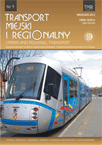 SITK RP
SITK RP 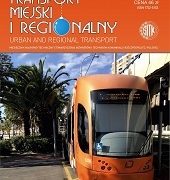
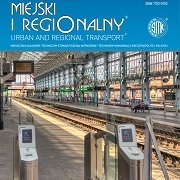
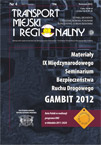 SITK RP
SITK RP 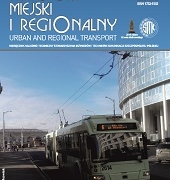
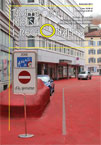 SITK RP
SITK RP 
 SITK RP
SITK RP SITK RP
SITK RP